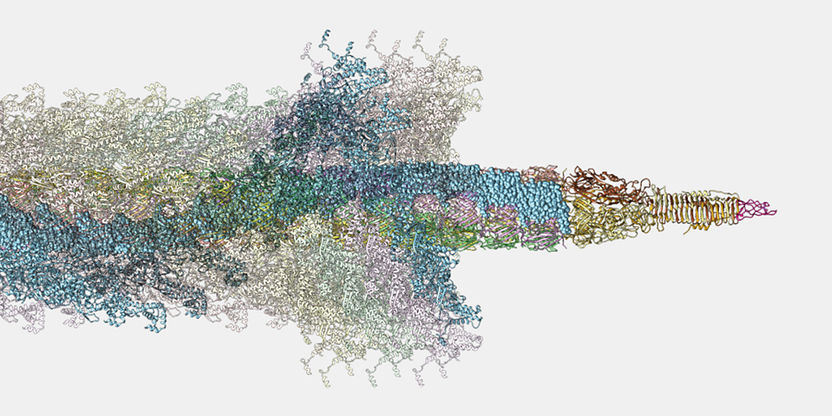Inorganic mercury exposure linked to damaged cell processes
University of Georgia research has found that inorganic mercury, which was previously thought to be a less harmful form of the toxic metal, is very damaging to key cell processes.
This study is the first to compare the effects of inorganic and organic mercury compounds at the biochemical, physiological and proteomic levels in any model organism, according to the study's lead author Stephen LaVoie, a microbiology doctoral student. The research looked at how inorganic and organic mercury affected specific molecular processes.
Inorganic mercury from the ore cinnabar was used for centuries against infections; in modern times, humans synthesized organic mercurials as antimicrobials, such as merthiolate.
"Today, most human exposure to inorganic mercury is from dental fillings, and organic mercury exposure is from methylmercury in fish," said study co-author Anne Summers, a microbiology professor in the Franklin College of Arts and Sciences.
Organic mercury exposure is associated with neurological disease, LaVoie explained, whereas inorganic mercury is known to cause neurological, kidney and autoimmune diseases. However, the molecular basis for their distinct toxicity profiles was not understood.
Owing to concern about fish consumption, most research has emphasized organic mercury, assuming it was more toxic, LaVoie said. But comparing them on key cellular processes, he found that inorganic mercury "caused more damage at lower concentrations than organic mercury."
For his study, LaVoie used a common lab strain of E. coli bacteria as a model cellular system. He exposed growing cells to mercury compounds and measured their reactive sulfur called thiols--essential metals and proteins that naturally bind essential metals via amino acid thiols.
"We used a fluorescent probe to detect thiols," LaVoie said. After mercury exposure the thiols decreased more with inorganic than organic mercury. Inorganic mercury was much more efficient at removing iron from iron-dependent proteins than the best organic mercury compound tested.
"As fellow oxygen-breathing creatures, it's important to know that inorganic mercury is more potent than organic mercury in disrupting protein-iron centers such as those we have in our own cells, " Summers said.
"More is being learned about the bacteria in and on our bodies," LaVoie said. "What we ingest affects them, too, and their health affects our health."
Original publication
Most read news
Original publication
Stephen P. LaVoie, Daphne T. Mapolelo, Darin M. Cowart, Benjamin J. Polacco, Michael K. Johnson, Robert A. Scott, Susan M. Miller, Anne O. Summers; "Organic and inorganic mercurials have distinct effects on cellular thiols, metal homeostasis, and Fe-binding proteins in Escherichia coli"; JBIC; 2015
Organizations
Other news from the department science

Get the life science industry in your inbox
By submitting this form you agree that LUMITOS AG will send you the newsletter(s) selected above by email. Your data will not be passed on to third parties. Your data will be stored and processed in accordance with our data protection regulations. LUMITOS may contact you by email for the purpose of advertising or market and opinion surveys. You can revoke your consent at any time without giving reasons to LUMITOS AG, Ernst-Augustin-Str. 2, 12489 Berlin, Germany or by e-mail at revoke@lumitos.com with effect for the future. In addition, each email contains a link to unsubscribe from the corresponding newsletter.
























































